The Tradition of Defining a Tradition
Throughout the history of American theatre, the desire for a separate black theatre tradition has raised challenges and contradictions. Over the past decade, as many black theatre institutions have stumbled and failed, revived and evolved, the question has arisen far too often, “Do we still need ethnically specific theatres?” Manifesto after manifesto has been written; critics, scholars and artists have debated; headlines have declaimed the question. Now at the new millennium for a new generation, we still wrestle with issues of cultural identity, political correctness, ethnic and gender politics all in an effort to correct the history of bigotry, oppression and segregation that has led generation after generation to this quandary in the first place. The history of black theatre institutions, however, provides a rich cultural legacy that should not be doubted.
Defining a Tradition
As I write this journal entry I have surrounded myself with a collection of publications pulled from my bookshelves that address the state and history of a black theatre tradition throughout the twentieth century and into the twenty-first. Collections of essays and anthologies that trace a history back to the African Grove Theater of New York City to the Harlem Renaissance, the discourse between W.E.B. DuBois and Alain Locke, chronicles of the American Negro Theater of the 40’s and 50’s to the Black Arts Movement of the 60’s, from the August Wilson speech at the 1996 TCG Conference, “The Ground on Which I Stand,” and the subsequent Wilson/Robert Brustein debate, to current musings and contemplations from artists, scholars and critics such as Kia Corthron, Henry Louis Gates, Jr., Eugene Nesmith, Paul Carter Harrison, and Harry Elam chronicled in articles and such books as, Theater in crisis?: Performance Manifestos for a New Century, edited by Maria M. Delgado and Caridad Svich, Africa-American Performance and Theater History: A Critical Reader edited by Harry J. Elam Jr. and David Krasner, Woodie King Jr.’s Black Theatre Present Condition, Paul Carter Harrison’s Kuntu Drama: Plays of the African Continuum, Errol G. Hill and James V. Hatch, A History of African American Theater, and so on, and so on. A limited and not fully representative list to be sure, but the many books that surround me attest to the fact that this question, this quandary of the purpose, history and definition of black theatre has been around for a long time, creating its own tradition of defining a tradition.
As I flip through the pages I am most fascinated by a book entitled, Black Magic, billed as a “Pictorial History of Black Entertainers in America,” written by Langston Hughes and Milton Meltzer. The book is an exhaustive documentation of the African American entertainer from minstrels and thespians like Bert Williams and Ira Aldridge, to the earliest adventures on Broadway with Noble Sissle and Eubie Blake, and the long trail of achievements from the 30’s on. Theatre is front and center including a chapter on Karamu Theater, founded in 1916 in Cleveland by two young Oberlin College graduates, Russell and Rowena Jelliffe. It provides an important photo documentation of one of the earliest black regional theatres (still in operation), producing such varied fare over the years from Shakespeare to Langston Hughes, Brecht and Pinter.
Black Magic was completed in 1967 and published shortly after the death of Langston Hughes. In a way, it was an effort to leave a trail of his understanding of this thing called “black theatre” and even more uniquely, the “black entertainer.” Hughes had been involved in an earlier debate with DuBois and Locke, regarding the cause of the Negro artist best exemplified in the essay, “The Negro Artist and the Racial Mountain,” in which he states,
We younger Negro artists who create now intend to express our individual dark-skinned selves without fear or shame. If white people are pleased we are glad. If they are not, it doesn’t matter. We know we are beautiful. And ugly too. The tom-tom cries and the tom-tom laughs. If colored people are pleased we are glad. If they are not, their displeasure doesn’t matter either. We build our temples for tomorrow, strong as we know how, and we stand on top of the mountain, free within ourselves.
Here, in 1926, he is defending his right to explore a unique Negro art. By 1967 he is attempting to declare and preserve it.
Also published in 1967 is the dynamic (and troubling) book by Harold Cruse, The Crisis of the Negro Intellectual: A Historical Analysis of the Failure of Black Leadership. This book is important to the conversation because it hints at the swirling contradictions that plague the efforts of black artists to establish a black theatre tradition. With his “take no prisoners” approach, he attacks the success of such artists as James Baldwin, Lorraine Hansberry and the American Negro Theater in a scathing chapter entitled, “Intellectuals and the Theater of the 1960’s – As Medium and Dialogue,” which begins by saying,
Since the 1920’s the American Negro has been floundering about on the fringes of the legitimate theatre, sometimes in, mostly out, through ups and downs, good times and bad. He has contributed many outstanding performers and performances, a few playwrights, and a nostalgic tradition for theatre lovers with a penchant for Negro theatrical exoticism. Yet, at this very moment, the Negro does not own, operate or sustain a single theatre institution of any critical importance anywhere in the United States.
He goes on to say,
Well it was shown much earlier in this critique that the events which led to the collapse of the American Negro Theater of the 1940’s demonstrated that Negroes do not want a separate Negro theatrical institution. Hence why dwell on the question? It must be dealt with again, because Negroes in the theatre persist in carrying a witless dialogue on the issue, a most evasive, double-talking, illogical dialogue.
Whether one agrees with Cruse or not, he throws down the gauntlet of this ongoing debate around a separate black theatre tradition, although he does see a strained hope in the budding agenda of the new 60’s arts radicals.
In every generation young producers and artists seem to find a way to launch new initiatives that build access and support for artists of color, either on their own accord or within “mainstream” institutions.
What follows Cruse’s doubtful diatribe is one of the most vibrant eras of black theatre institutions in the history of America. New York City sees an explosion of original theatres such as the Bed Stuy Theatre, the Cornbread Players, the East River Players, The Brownsville Laboratory Theatre, The Demi-Gods, Theatre Black, Urban Arts Corp, The Hadley Players, Afro-American Total Theatre, New Federal Theatre, New Heritage Theatre, National Black Theatre, and Black Vibrations. This growing movement leads to the creation of the Black Theatre Alliance, a not-for-profit service organization that at its height has over seventy-five black theatre and dance organizations as members. From 1970-1981, this organization hosts black theatre festivals at the Brooklyn Academy of Music and Lincoln Center.
Still the debates over what defines an authentic black theatre tradition do not stop here of course. Enter LeRoi Jones soon to be Amiri Baraka and the Black Arts Movement. Baraka throws down yet another gauntlet by taking to task the Negro Ensemble Company, calling them a “Negro Pimp Theatre.” He states in an interview in 1971,
We are talking about Black Theatre, and the white boy creates the Negro Ensemble Company as Black Theatre, when actually it is a Negro Theatre in the village, when actually people who were talking about black art got out of the Village because they saw the contradiction in trying to do Black Theatre in the white community.
His idea of a true black theatre harkens back to the W.E.B. DuBois mantra, “for us, by us, near us,”
The people who are interested in creating black art have got to come together and begin to create institutions, city institutions, state institutions, national institutions, and deal in such a way that they are not totally dependent on white people’s approval and, finally, white people’s money. We have got to create institutions that are not just based on receiving grants; institutions that can deal with the economy that is in the community, that talk to the needs of the community.
For many the 60’s into the 80’s are considered the golden age of black theatre in America and will see the rise of a new generation of black regional theatres, many launched through funds from the Comprehensive Employment and Training Act (CETA), including Oakland Ensemble Company, Crossroads Theatre Company, Penumbra Theatre, Freedom Theatre, and St. Louis’ The Black Rep. But as the success of these institutions waxes and wanes, the debate hits a singular revelatory apex when August Wilson launches his now infamous speech and is subsequently challenged in print and later debated by Robert Brustein, questioning his notion of “separatism.” The debate is questioned even further when Henry Louis Gates, Jr. proffers his theory of the “true” black theatre tradition as seen through the success and impact of the current Urban Circuit most recently of Tyler Perry fame, part of a long tradition derogatively known as the Chitlin’ Circuit, an historical black theatre and performance touring circuit with roots from the age of vaudeville. Gates almost facetiously suggests that more traditional black theatres could learn something from this “fly by night” producing model, but none of these discussions seem to leave us with a satisfying answer for the ongoing challenges of a black theatre tradition. Wilson himself attempted to provide a new model for stabilizing black theatres through his African Grove Institute for the Arts (AGIA) initiative, but after a few convenings and an unwieldy bureaucracy, it resulted in very little, leading Wilson to lament in an interview,
I’m willing to bet that if you go back and look that after the speech there was less money given to black theatres than before. And there are reasons for that. And I think it’s because in certain ways there’s not a value for black theatre.
Who gets to define black theatre?
I have taken us down this path of contemplation, because I too made a similar attempt some five years ago to begin yet another investigation of the black theatre tradition through a book project entitled, Testament: 40 years of Black Theater History in the Making, 1964-2004. My main goal was to identify three generations of institution builders, the 60’s pioneering generation, the late 70’s-80’s second generation regionals, and the new millennial efforts. At that time, (2007-2008), many of the previous generation’s theatres had already closed, and the focus was shifting to the opportunities of the current generation’s artists in larger white mainstream theatres, opportunities that were not necessarily availed to previous generations.
The research and interviews led to a series of panels hosted by the Foundry Theatre in collaboration with The Collective, an organization of African American theatre students at NYU’s Tisch School of the Arts. In one room I wanted to capture the thoughts of Woodie King Jr. (New Federal Theatre), Voza Rivers (New Heritage Theatre Group)and Paul Carter Harrison (NEC), connect them with Karen Baxter (Rites and Reasons), Susan Watson Turner (NEC), and Ricardo Khan (Crossroads), and overlap them with a younger generation of theatres and artists like Debra Ann Byrd (Take Wing and Soar), Mildred Ruiz and Steven Sapp (Universes), and Lloyd Suh (2G). The event was successful to the degree that it exposed students to a history many were not familiar with, but it also revealed schisms and disconnects. Although a number of playwrights involved were finding success, black theatres felt left out of the funded process of developing new works. Young students looking for access railed at the 60’s pioneers, while younger producers were looking for a new way to survive in the present day ecosystem but running into many of the age-old problems of access to funding and lack of stability. Yet there was a sign of hope, an olive branch perhaps from the old guard to the new guard to begin establishing stronger ties and alliances for the future.
Memories of that event lead me to this moment, a week of conversations, exchanges and reports from the field. No matter how one looks at the history of debates, essays, critiques and conversations, you cannot help but see a fascinating history that documents the challenges of producing theatre in America, an American story. In every generation young producers and artists seem to find a way to launch new initiatives that build access and support for artists of color, either on their own accord or within “mainstream” institutions. The warning from this quick stroll through history is to stay clear of absolutes, for in each debate or conflict great contradictions arise—as Harold Cruse bemoans the failure and lack of interest in Negro Theatre institutions, one of the most fruitful eras for black theatre artists is about to unfold; as Amiri Baraka challenges the funding choices made by the Negro Ensemble Company, a proliferation of government funded regional black theatres launch a second fruitful era of thriving artistry; and then as August Wilson and Robert Brustein battle age old ideological questions, nationalist vs. integrationist, new young companies like Congo Square, MPACCT, and the African Continuum Theatre are finding their way into the maelstrom, impacting the surrounding communities and keeping the idea of a black theatre tradition alive. And today, new companies like the Movement Theatre Company, Liberation Theater Company, the Hansberry Project and the highly effective New Black Fest are pushing forward innovative methods of development and exposure as mainstream theatres are attempting to diversify through emerging artist initiatives. And this is just one limited and singular thread in understanding how African American theatre artists are finding their way to production.
Again, who gets to define black theatre?
The definition lies in the recognition and understanding of a broad and illustrious history and not in one single answer. It is a history that should be studied and known because it reflects and coincides with the challenges of race and identity in America, a microcosm of the larger scale social debate and contemplation. Hopefully, this week’s exchange of conversations, blogs and musings will add to this long tradition, promising to be an informative reflection of people still in the trenches of this quandary, facing issues of leadership transition, economic downturn, apathy, isolation, neighborhood decline, gentrification, generational disconnect, generational usurpation, thinking of new language and old traditions, minding the current trends of multiculturalism or hybridity while staying true to community. These are original stories, American dream stories, “I have a barn” stories, against all odds, “let’s start a theatre” stories. Why should any brave soul be denied this freedom? If nothing else, what is remarkable is that these contemplations and queries document a wonderful tradition of discourse that stands as a vibrant reflection of the resilience of the African American artist in the American theatre.
SOURCES
Mike Coleman, “What Is Black Theatre?” (Interview with Amiri Baraka), Black World 20, no.6 (April 1971): p.32-36
Harold Cruse, The Crisis of the Negro Intellectual, (New York: Quill Edition, 1984 ©1967 Harold Cruse): p.520
Langston Hughes, Black Magic, (New York: Bonanza Books, 1967)
Langston Hughes, “The Negro Artist and the Racial Mountain,” The Norton Anthology of African American Literature, Henry Louis Gates, Jr., Nellie Y. McKay, eds. (New York: WW Norton & Company, 1997) p.1271
Loften Mitchel, Black Drama: The Story of the American Negro in the Theatre, (New York: Hawthorne Books, Inc., 1967)
August Wilson, “A Conversation with August Wilson,” August Wilson and Black Aesthetics, ed. Sandra Shannon and Dana A. Williams, (New York: Palgrave Macmillan Ltd., 2004)


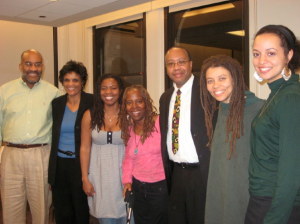
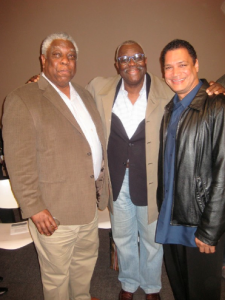
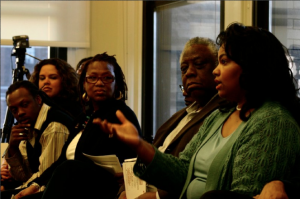

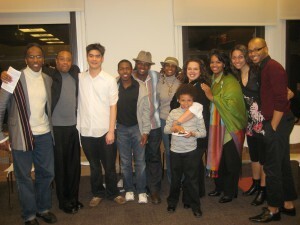
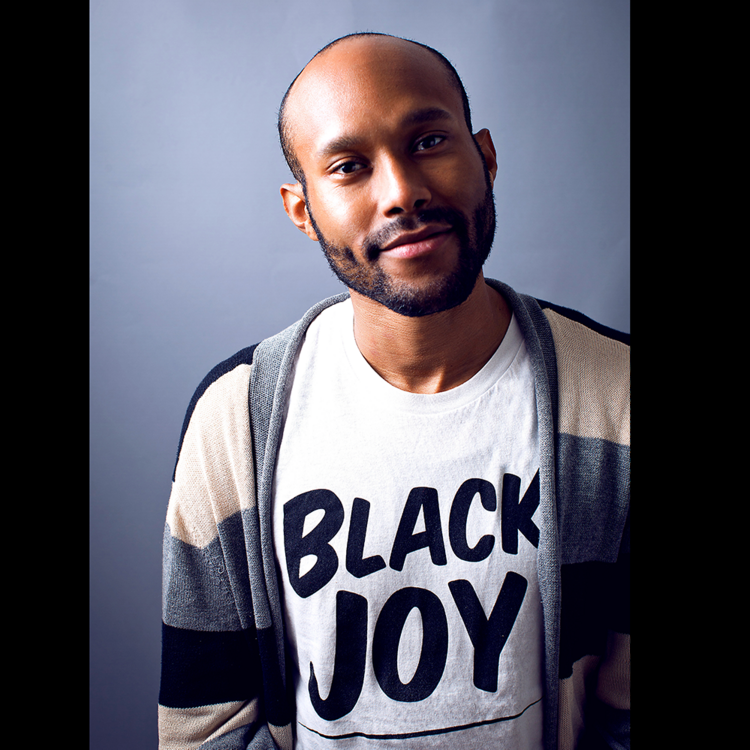
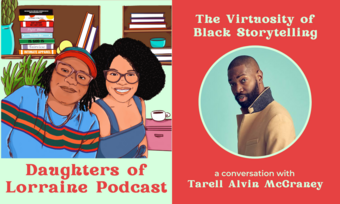



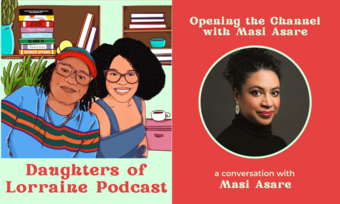




Comments
The article is just the start of the conversation—we want to know what you think about this subject, too! HowlRound is a space for knowledge-sharing, and we welcome spirited, thoughtful, and on-topic dialogue. Find our full comments policy here
Still happening Talvin. Came across this doing my work! Thanks
Thank you for such an insightful article. This historical overview is excellent!
Ahhhh books!! Thanks Talvin, What a great article! The quotes are provocative and feel very present today. I feel we have to really examine where we put our energies. A national collective action seems to be called for. I am very interested in the notion of a National Black Theater(s) - how innovative could we be with this idea?
Great article although it's a bit distressing to know that at 63 I am still engaged in discussing the same issues around defining our aesthetic that I was at 23.
can any one weigh in here? I LOVE the start of this exchange and the willingness to be bold and throw out concerns and observations - but as usual - to what ends? Is the model going to be broken re-made or do we just try to do what we have been doing BETTER and again and again.. as with most theater pieces the question being asked is "what is the action?" I await the next chapter..peace
HWJ
However it is a sad reflection on as you say a complex multi faceted history inclusive of social, cultural, economic, and other real time facts. That black folks had and are dealing with. Even with the writer's optimism and opportunity to engage with today's theatre folks it just appears to be that we are back at square one having to start over again. Maybe with a little wisdom if we recognize it.
For more information on black theater, please access facebook.com - Concept East Theater (groups). And please send us items to post. It takes teamwork to make the dream work.
This is an amazing essay Talvin that speaks to the dearth of companies and honors the efforts of many unrecognized artists who are keeping black drama alive. The over view of the field that you present is heart warming and thought provoking.
Talvin- thank you so much for getting this history underneath everything that will come this week.
Here's a link to the public event that took place in DC in the early days of our work that is relevant to this discussion. Particularly listening to Jennifer Nelson's reading of Suzan Lori Parks' "What is a Black Play?" It was another extraordinary gathering and another way into the conversation. Jennifer starts about three minutes in, but Shay Wafer and Sandra Gibson give an intro to the whole evening and then Marcus Gardley, Lydia Diamond, Rha Goddess, are among the writers who read from their new work.
http://www.livestream.com/n...
I feel fortunate to read this, prepared to read and learn more, and looking forward to sharing it all with students and colleagues. Thanks, Talvin, for such a thoughtful start to the complicated and important conversation here.
Talvin, thanks for laying such a rich foundation for this week's conversation.